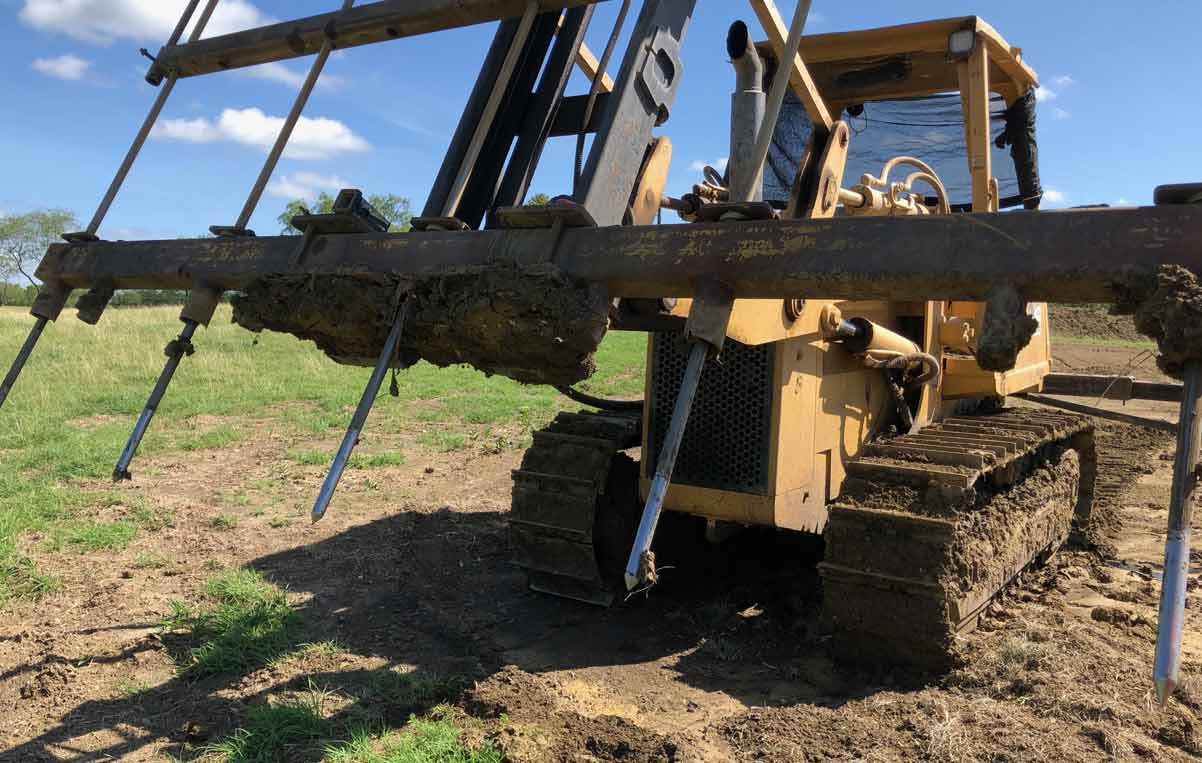Soil boring is an important part of building projects. It helps builders understand the ground they are working on. By studying the soil, builders can make safer and smarter choices for their projects. This process involves drilling into the ground to collect soil samples, which are then studied in a lab.
Knowing what lies beneath the surface is key to any construction project. Soil boring gives builders a peek underground. It lets them see the types of soil, how deep they go, and where water might be. This information is very useful when planning a building’s foundation.
Without soil boring, construction projects face serious risks. If the ground is unstable or hides underlying issues, it can lead to delays, added costs, or even structural failures. Soil boring helps uncover these problems early, allowing builders to plan appropriately and avoid costly surprises. It’s a crucial step in making sure the project stays on schedule and the foundation stays safe.
What Is Soil Boring? Understanding the Basics
Soil boring involves drilling into the ground to collect soil samples. These samples help builders understand the soil’s properties and layers. This knowledge is important for safe and successful construction projects.
During soil boring, a drill bores into the ground. It collects cylindrical samples, known as core samples, from different depths. These samples give a clear picture of the soil’s composition. Engineers then study these samples in a lab to understand various soil properties.
One key reason for soil boring is to determine the soil’s bearing capacity. This tells builders how much weight the soil can support. It also helps identify potential issues like groundwater levels, soil types, and rock layers. Knowing this information upfront saves time and prevents costly surprises during construction.
Essential Tools and Techniques for Soil Boring
Soil boring uses a variety of tools and techniques to collect accurate soil samples. Here are some of the most essential tools used in the process:
- Drilling Rigs: These powerful machines bore into the ground to collect soil and rock samples. They come in different sizes, from portable units to large truck-mounted rigs.
- Augers: Commonly used in shallow soil boring, augers are spiral-shaped tools that help lift soil to the surface. They are excellent for getting samples from loose, soft soils.
- Shelby Tubes: These are thin-walled tubes used to collect undisturbed soil samples. Shelby tubes preserve the soil’s natural condition, making them ideal for lab testing.
- Split Spoon Samplers: Used in the Standard Penetration Test (SPT), these samplers collect disturbed samples from deeper layers. The SPT measures soil resistance, giving insights into its density and strength.
Each tool serves a specific purpose and helps gather accurate data. Proper technique is just as important as the tools. Consistent sampling methods ensure that the data collected is reliable. Using the right tools and techniques, builders gain a thorough understanding of the ground conditions, which leads to safer and more efficient construction projects.
Interpreting Soil Boring Data: What Builders Need to Know
Interpreting soil boring data is essential for making informed construction decisions. Here’s what builders should focus on:
- Soil Composition: The types of soil present in different layers. Knowing if the soil is clay, sand, silt, or a mix helps in choosing the right construction methods.
- Bearing Capacity: The ability of soil to support the weight of a structure. This data helps in deciding the foundation type and depth.
- Moisture Content: The amount of water in the soil. High moisture can weaken the soil, while low moisture might cause cracks and instability.
- Density and Strength: The soil’s compactness and how much force it can withstand. Denser soil usually offers more support for structures.
- Groundwater Levels: The depth at which water is found in the soil. High groundwater can pose challenges like flooding or increased erosion.
Analyzing this data helps builders understand the ground conditions and make necessary adjustments to the project plan. It reduces risks and ensures that the building will be safe and durable.
How Soil Boring Influences Construction Decisions
Soil boring data has a direct impact on many construction decisions. Here’s how it affects the planning and execution of projects:
- Foundation Design: The data helps decide what type of foundation is best suited for the soil conditions. For instance, clayey soil might need a deep foundation, while sandy soil may require a different approach.
- Project Budgeting: Identifying potential soil issues early can help budget for soil stabilization or other necessary treatments. It also prevents unexpected costs during construction.
- Site Selection: If the soil is found to be unsuitable for construction, planners can decide to look for alternative sites, saving time and resources.
- Safety Measures: Understanding soil stability and moisture content helps in planning safety measures to prevent issues like landslides or foundation failure.
- Construction Timeline: Knowing the soil conditions in advance allows for better task scheduling and helps plan for any extra time needed for soil treatment.
By effectively using soil boring data, builders can ensure their projects proceed smoothly and safely. This allows for better resource allocation and reduces the risk of project delays.
Conclusion
Soil boring is a crucial process for understanding the ground beneath a construction site. It provides valuable data that helps in making informed decisions, from foundation design to budgeting and safety measures. Interpreting soil boring data ensures that builders can plan effectively and avoid costly surprises. By using the right tools and techniques and by understanding what the data means, builders can create safe, stable, and lasting structures.
Ready to make your next project smoother and more secure? Contact ProChemical Soil Stabilization today for expert soil analysis and soil stabilization services. Let’s build a stable future together!

